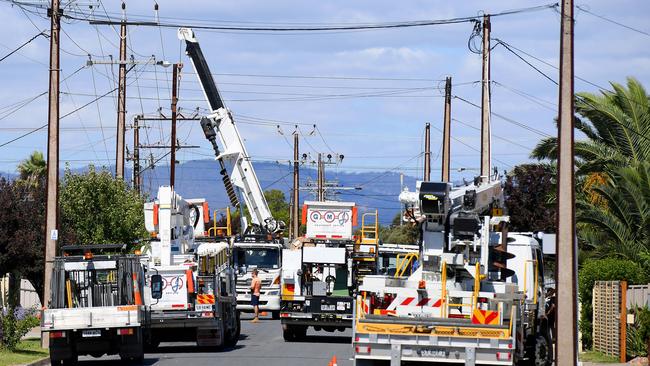Australian Energy Regulator tells SA Power Networks to cut power bills
Householders will see a slight cut in their electricity bills from next year while small businesses will see hundreds slashed from their bills. And there’s a bigger change coming in how we get charged with a move to a “solar sponge” to soak up the sunshine.
SA News
Don't miss out on the headlines from SA News. Followed categories will be added to My News.
Household electricity bills will be cut by $63 a year next financial year, while small businesses should see a reduction of $283, under a draft decision on how much distributor SA Power Networks can charge customers.
While the bill saving is small, the regulator has accepted in-principle a major change in the way SA Power Networks charges customers. A new structure has been created where a “solar sponge” tariff will make electricity cheaper in the middle of the day but there will be extra charged on electricity used at peak times of breakfast and early evening.
The way South Australians engage with electricity is changing and networks like SA Power Networks have to adjust their business accordingly, said Jim Cox, acting chair of the Australian Energy Regulator.
“The future impact of electric vehicles and electric storage are uncertain but increasing levels of solar photovoltaic installations (rooftop solar) are causing voltage issues in the low voltage network,” he said.
“This draft decision approves $34.1 million for SAPN to develop a new low voltage management program.”

Under the tariff changes, SAPN would charge:
SOLAR Sponge (10am to 3pm) — a quarter of the standard single rate.
PEAK (6am to 10am and 3pm to 1am) — 125 per cent of the single rate.
OFF-PEAK (1am to 6am) — half the price of the single rate.
The tariffs would be implemented over time as households get smart meters that report when electricity is used.
The Australian Energy Regulator rules how much revenue SA Power Networks can earn in five-year blocks. It is now deciding on the July 2020 to June 2025 period and has set the revenue at $3.9 billion, which is $300 million less than SAPN wanted.
SA Power Networks said it agreed customers should pay no more than necessary.
“We have consistently delivered on that,” spokesman Paul Roberts said.
Distribution cost increases had been held below inflation for 20 years and the regulator had previously found SAPN was the most efficient distributor in the National Electricity Market, he said.
Energy and Mining Minister Dan van Holst Pellekaan welcomed the cost reduction.
“This draft determination shows that our state is heading in the right direction when it comes to the price of electricity,” he said.
“We welcome the support for SAPN’s proposed solar management program, which will help consumers get the most out of their solar investments, and the new tariff proposal to make power cheaper during sunny days where demand is low.”

SA Power Networks charges make up about 31 per cent of the average residential customer bill. Changes to the wholesale prices charged by generators, transmission costs, environmental levies and retail margins will also affect bills.
Mr Roberts said SAPN was concerned the regulator wanted to reduce how much should be spent on maintaining and upgrading infrastructure.
“Running down the electricity network through short-term cost cutting will push increasing costs on to customers in the future,” he said.
The regulator found SAPN had not fully justified expenditure and called for more consultation with consumers.
The regulator’s lower revenue allowance means residential customers would get a $63 cut rather than the $40 cut SAPN had proposed from July 2020.
Charges would then increase gradually with inflation, with customers still $20 ahead after five years under the regulator’s draft.
Small business is expected to see a $283 cut in 2020-21.

Business SA senior policy adviser Andrew McKenna said the proposed savings were welcome.
“While Business SA supports measures which ensure SA Power Networks operates its network efficiently, we are concerned that modest reliability improvements for the Adelaide Hills and Eyre Peninsula have been rejected,” he said.
South Australian Council of Social Service chief executive Ross Womersley was pleased the AER had listened to concerns raised by consumer organisations.
“(The price decrease) will be good news for energy consumers, and particularly those on low incomes with limited room to move in the household budget,” he said.
The regulator has opened up its draft decision for comment until January next year.
It will then make a final decision in April.
